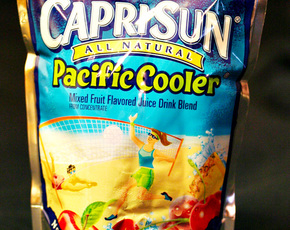Is Tetrasodium Pyrophosphate Bad For You?
Also Known As: sodium pyrophosphate, tetrasodium phosphate, TSPP
Short answer
Tetrasodium pyrophosphate is bad for you, like most additives. The additive has zero nutritional benefits and comes with many alarming side effects, especially when consumed in large quantities.
Category 'F' is for things that fail to bring anything beneficial to the table, and are very harmful to your health. We recommend completely avoiding anything in this category. Long-term side effects of 'F' items are usually very serious.
View Full Grading System
Category 'A'
Very healthy and numerous health benefits. Side effects are rare. Things rated an 'A+' are typically necessary for survival (for example, water).
Very healthy and numerous health benefits. A few harmful qualities may be associated, but only under certain circumstances such as an allergic reaction.
Very healthy and numerous health benefits. Harmful qualities may be associated, but aren't usually serious.
It is important to note that even the best things in life can become bad in immoderate amounts. So, although something may be rated an 'A+', overconsumption/overdoing can bring unwanted effects.
Category 'B'
Very beneficial to your health. Things rated a 'B+' may have a few harmful qualities to pay attention to.
Overall beneficial to your health. Things rated a 'B' may have some harmful qualities to pay attention to.
More beneficial to your health than not. However, harmful qualities are most likely associated and shouldn't be overlooked.
The main difference between category 'A' and category 'B' is the harmful qualities typically present in 'B' items. Serious side effects are usually uncommon, but are still possible and should be taken note of.
Category 'C'
Both beneficial and harmful qualities associated. Things rated a 'C+' are typically a bit more on the beneficial side. Still, moderation is important.
A fairly even ratio of beneficial and harmful qualities. Moderation is important. Very general topics that can lean towards both sides of the spectrum will be placed here as well. Rice, for example, can be good or bad depending on the type.
More harmful than beneficial. Side effects are common, especially when consumed/done excessively. Moderation is very important.
Category 'C' usually denotes to both good and bad qualities. When it comes to this category, it is important to keep this word in mind: moderation.
Category 'D'
Harmful to your health. Although benefits may be associated, the bad most likely outweighs the good. Moderation is very important.
Harmful to your health. A few benefits may be associated, but the bad outweighs the good. Moderation is extremely important.
Harmful to your health. Very few, if any, benefits are present. Things in this category should be avoided as much as possible.
Category 'D' is typically for things that are more harmful than beneficial. While consuming/doing something unhealthy once in a blue moon shouldn't hurt, we definitely recommend eliminating 'D' items as a regular part of your routine/diet.
Category 'F'
Category 'F' is for things that fail to bring anything beneficial to the table, and are very harmful to your health. We recommend completely avoiding anything in this category. Long-term side effects of 'F' items are usually very serious.
Category 'N'
'N' stands for neutral. Things placed into this category are generally (a) neither good nor bad for you, or (b) lack the necessary evidence to reach any conclusions.
Long answer
Tetrasodium pyrophosphate is a chemical compound formed by the reaction of phosphoric acid with sodium carbonate to create disodium phosphate which is then further heated to obtain the final product.
Let’s think about phosphoric acid for a minute. Aside from its use in making food additives, it is otherwise mainly used to remove rust from metals. Really? That doesn’t seem safe at all to be eating; can you imagine what it would do to your insides?
In food, this additive is used as an emulsifier, thickener, dispersing agent, and as a pH buffering agent. It is typically found in highly processed foods like chicken nuggets, imitation crab, marshmallows, canned tuna, and soy-based meat alternatives – foods you shouldn’t eat much of anyway – if any at all. The purpose of this ingredient in these foods it to bind protein and water to keep all of the ground-up substances together. Yum!
Some major health concerns to be aware of regarding tetrasodium pyrophosphate includes its alkaline nature and relatively low lethal human dose. Studies have found that nausea, vomiting, and diarrhea are not just possible after consumption but likely. Exposure can also cause skin rashes and visual disturbances.
Alkaline substances can occasionally offer great benefits to the body, like helping you to lose weight and stay hydrated. However, high amounts of alkalinity can lead to slow cell growth, so moderation and pH balance are important when considering food consumption.
The lethal dose can vary by a person’s size, but can be as low as 1 ounce for a 150-pound person. Studies performed with animals have also shown that high concentrations of this substance can lead to kidney damage and possible teratogenic effects (congenital deformities or spontaneous abortion).
Tetrasodium pyrophosphate is also used in commercial products like toothpaste and detergents. In toothpaste, it is used as a method of tartar control which works by removing calcium and magnesium from saliva to prevent binding to the teeth. Unfortunately, this same process may be occurring when you eat foods containing this additive and these minerals, and instead of absorbing the necessary minerals, they are being sequestered away to be expelled from the body.
Possible short-term side effects
- skin rash
-
visual disturbances
-
nausea
-
vomiting
-
diarrhea
-
depletion of minerals
Possible long-term side effects
- toxin build-up
-
kidney damage
-
teratogenic effects
-
lethal in high concentrations
Commonly found in
- chicken nuggets
-
imitation meat and seafood
-
canned meat and seafood
-
marshmallows
-
soy-based meat substitutes
-
detergent
-
toothpaste
Please turn your Ad Blocker off to see this content. Thank you!
Thank you for your feedback!
Written by Kristin Brown, DC, MS
Published on: 07-07-2016
Last updated: 12-10-2016
Thank you for your feedback!
Written by Kristin Brown, DC, MS
Published on: 07-07-2016
Last updated: 12-10-2016

 Approved by
Approved by 














